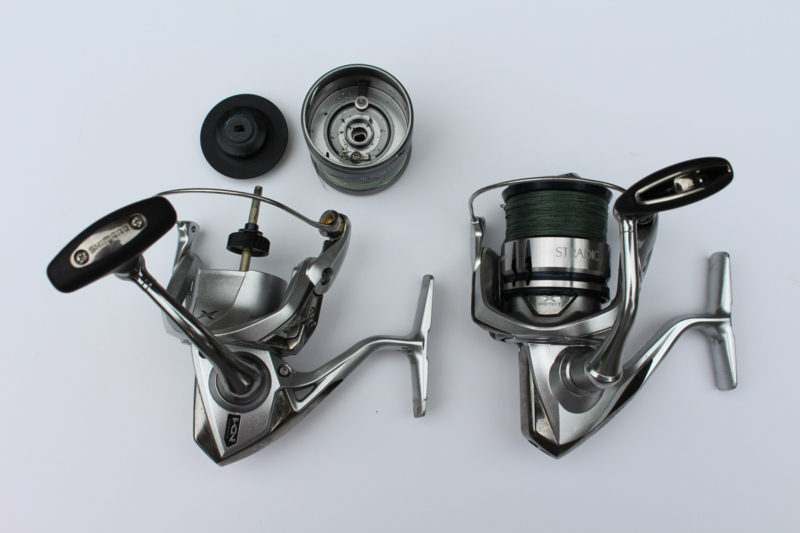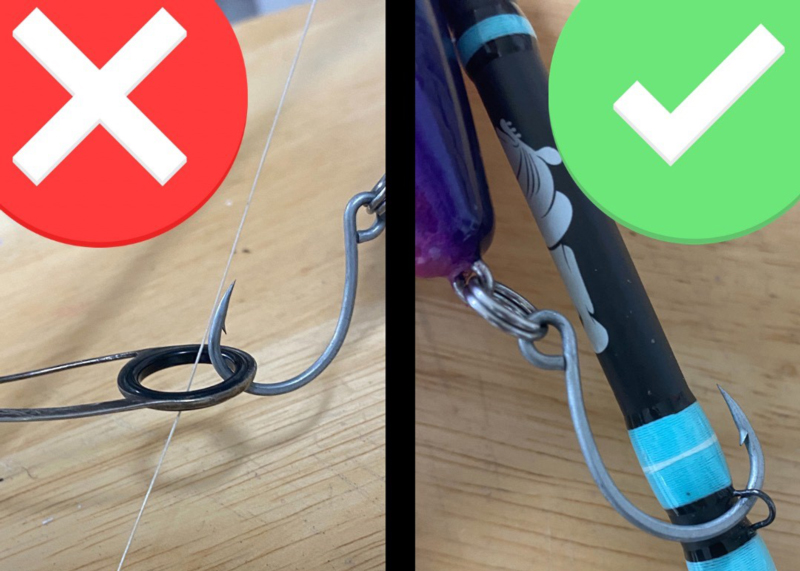Most anglers have made these mistakes at one point or another, but fishing beginners might not even realize the practices that could be the difference between an empty cooler or a full one. Save yourself some headaches by learning from other anglers’ mistakes.

Not Cleaning and Maintaining Reels
Ever hear the saying “Take care of your gear and it will take care of you?” As cheesy as it sounds, it’s true. Just by performing basic care and maintenance, your reels will last much longer. So how can you extend the life of your precious fishing reels? After fishing in saltwater a simple rinse under freshwater will help maximize the life of your reels. No one likes the sound of grinding with every turn of the handle, and whether you fish the bay or offshore, your reel can get filled with sand and saltwater. If it’s not removed this can lead to corrosion. Even if your reel is “salt-resistant,” it doesn’t hurt to go the extra mile. As far as fully disassembling your reel to oil and grease, every few months should be sufficient and will leave your reels feeling brand new again. The grease and oil help prevent corrosion by making a protective coating around the reel components. YouTube has many videos on how to clean, oil, and grease your reels.
Storing Baits Together
Known for their durability, Z-Man baits definitely provide big bang for your buck. However, if you have ever tried to store their baits with any of your other soft plastics you probably opened your tackle box to a mess of melted baits. This is because when certain plastics come in contact with others a chemical reaction can occur. This chemical reaction will melt and ruin all the baits being stored together. On top of that, similar to mixing colors in the laundry, your baits can also bleed colors. This can easily be avoided by keeping baits in the original packaging.
Not Allowing Lures To Dry Before Being Returned to a Tackle Box
Are you up to date on your tetanus shot? If not, well, you’d better pay close attention. This mistake can be hard to avoid and everyone will have to deal with it at one point or another. When you mix water, oxygen, and metal, you get rust. Rust is not fun and once it emerges your whole tackle box will quickly become wiped out by this plague. Whether you fish saltwater or freshwater your box is prone to it. The best way to avoid losing a whole tackle tray or tackle box worth of tackle is to avoid putting wet baits and hooks back in the box. If you decide to change lures don’t immediately place the bait right back in your box. Either let it sit out to dry on your center console dashboard or in a cupholder, put it in a pocket of your fishing bag, or lay it out somewhere. In the event that you find that some of your hooks or baits are rusting, change the hooks and throw any rusty hooks out. Another tip is to put the silica packets you find in shoeboxes and beef jerky bags inside your box, to help curb moisture.
Buying Pre-Tied Rigs
Although it is convenient, buying pre-tied fishing rigs like dropper loop rigs can become costly. Instead buy the leader line, hooks, and swivels needed to tie the desired rigs and learn to make them yourself. A quick google search will yield instructions on how to tie dropper loop rigs, Sabiki rigs, Carolina rigs, fishfinder rigs, and countless more. Learning to tie the dropper loop knot will save you lots of money which you can put towards more fishing gear! Additionally, to save time on the water and keep your rigs from getting tangled try a fishing rig binder, which is essentially a binder with bags to organize and store your rigs for easy access.
Using Rod Guide Eyes as Hook Keepers
One of the most common mistakes is using the rod guide eye as a hook keeper. This bad practice can lead to hooks scratching the ceramic inner ring of the eye, which can ultimately end up cutting your line when you are reeling in the catch of a lifetime. If your rod doesn’t have a hook keeper (it should be located above the reel seat), consider buying a hook keeper that can be placed on your rod. If you absolutely need to put your hook somewhere and don’t have a hook keeper, use the legs of the guide. Another mistake to avoid is reeling in too much line so that your hook or lure hits and scratches the tip-top eye of your rod.

Casting Towards a Blowup
Everyone’s first instinct as soon as they see a fish jump out of the water or a big blowup is to bomb their bait right at it. Sight-casting fish is sure to give you a good adrenaline rush, but don’t make this simple mistake and lower your chance at catching the fish. Instead of casting right towards the blowup, cast a few feet past it — then you can work your bait through where the blowup occurred. This method is also less likely to spook the fish, and will yield better results.
Assuming Fish Are in the Deepest Water
Often, beginner anglers attempt to cast as far as they can towards the middle of a pond or lake. Although you will catch some scattered fish doing this, this is not the most effective way to cover water and get your bait in front of as many fish as possible. All types of fish seek cover to ambush prey or hide from predators. Therefore, casting as close as possible to structure is the best way to increase your odds of locating some fish. One of the most common features holding ambush predators like snakehead and bass is the shoreline. The shoreline creates lots of possible hiding spots like weed edges, aquatic vegetation, and overhanging trees. The best way to target these areas is to use a technique called fan casting. Fan casting enables anglers to cover all the water within a certain radius around them. When you approach a spot while fishing from the bank, begin by casting parallel to the shoreline. Then change the angle of every cast until you have covered the entire radius around you. Fan casting also works from a boat, and when your boat is positioned how you desire you can begin fan casting the surrounding water.
-By Ian Rubin